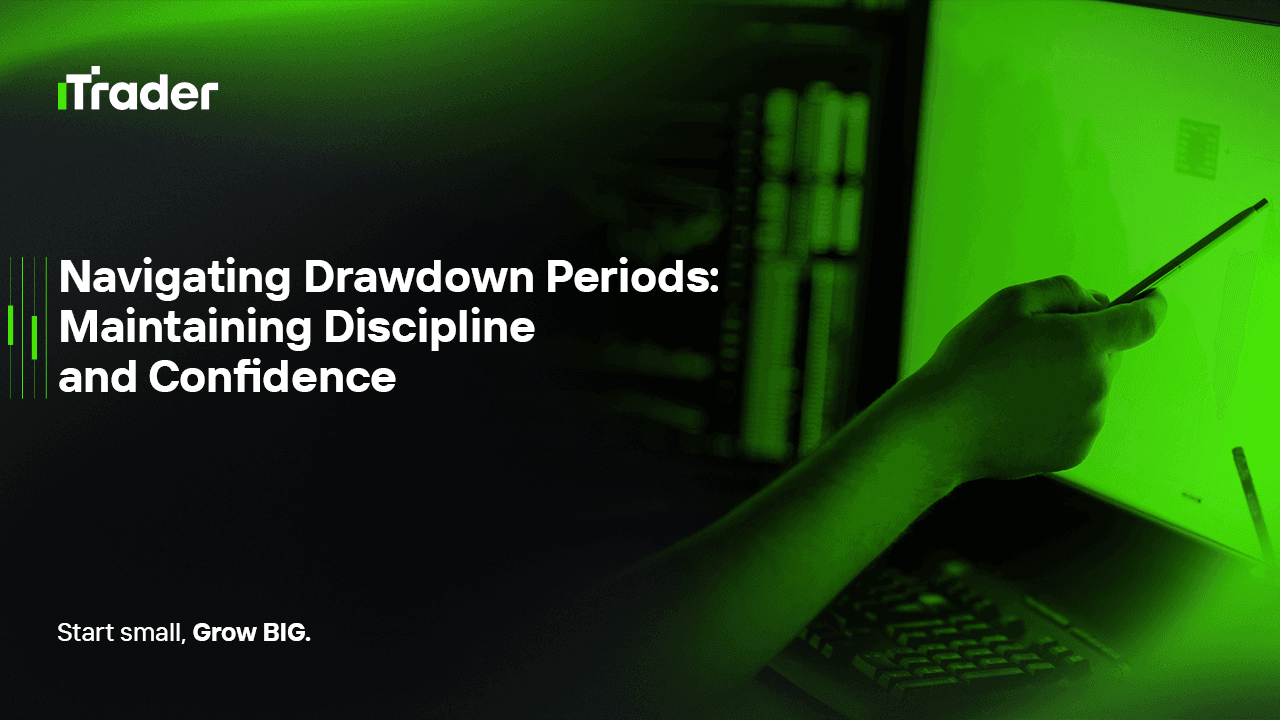2025-08-04
Forex trading is not merely a technical or strategic exercise—it is a deep psychological endeavor. While developing a profitable system is crucial, a trader’s long-term success ultimately depends on how well they manage their mental resilience during adverse periods. Among these, drawdowns are particularly challenging, especially for prop traders working under evaluation, pressure, and strict risk limits.

In this blog, we’ll explore the emotional structure behind drawdowns and provide a detailed roadmap on how professional traders can maintain discipline and confidence even when facing consecutive losses or underperformance.
A drawdown is the decline in account equity from a peak to a trough. It represents the temporary loss in value due to a sequence of losing trades. While mathematically it is just a number, psychologically it carries significant weight.
Drawdowns manifest in two major dimensions:
A drawdown is inevitable in any robust strategy. What varies is how traders respond to it.
During a drawdown, traders often go through five psychological stages:
Each stage poses a decision-making risk. Discipline and belief are what keep traders grounded and systematic throughout this cycle.
Discipline is the ability to follow predefined rules and logic-based actions, even under stress.
Discipline is about responding based on criteria, not emotion. A well-crafted protocol turns panic into controlled responses.
Discipline is the foundation of consistent performance. During drawdowns, it's what separates professionals from gamblers.
Staying confident in your system—even when it underperforms—is a sign of maturity in trading psychology.
A robust performance review framework helps separate natural drawdowns from systemic failure.
Keeping a journal is especially valuable during drawdowns. It reveals behavioral patterns and strategy weaknesses.
Include:
This creates a feedback loop that improves both your system and your psychology.
Prop traders face additional pressure during drawdowns:
To manage these risks:
In prop trading, drawdowns are not just technical declines—they are emotional storms. To navigate them successfully:
Success is not defined by how well a strategy performs at its peak, but by how committed you remain when it underperforms. True trading mastery comes when you can follow your plan—not just during the highs, but more importantly, through the inevitable lows.
© 2025 iTrader Global Limited | Số đăng ký công ty: 15962
iTrader Global Limited có trụ sở tại Hamchako, Mutsamudu, Đảo tự trị Anjouan, Liên bang Comoros và được cấp phép, quản lý bởi Ủy ban Chứng khoán Comoros. Giấy phép số: L15962/ITGL.
iTrader Global Limited hoạt động dưới tên thương mại “iTrader” và được cấp quyền thực hiện các hoạt động giao dịch ngoại hối. Logo, thương hiệu và trang web của công ty là tài sản độc quyền của iTrader Global Limited.
Các công ty con khác của iTrader Global Limited bao gồm: iTrader Global Pty Ltd, số đăng ký công ty tại Úc (ACN): 686 857 198. Công ty này là đại diện được ủy quyền (số đại diện AFS: 001315037) của Opheleo Holdings Pty Ltd (giấy phép dịch vụ tài chính Úc AFSL: 000224485), có địa chỉ đăng ký tại: Tầng 1, số 256 đường Rundle, Adelaide, SA 5000.
Tuyên bố miễn trừ trách nhiệm: Công ty này không phải là tổ chức phát hành và không chịu trách nhiệm đối với các sản phẩm tài chính được giao dịch trên hoặc thông qua trang web này.
Cảnh báo rủi ro: Giao dịch CFD có mức độ rủi ro cao do đòn bẩy và có thể dẫn đến mất vốn nhanh chóng, không phù hợp với tất cả người dùng.
Giao dịch quỹ, CFD và các sản phẩm có đòn bẩy cao khác đòi hỏi kiến thức chuyên môn.
Nghiên cứu cho thấy 84,01% nhà giao dịch sử dụng đòn bẩy bị thua lỗ. Hãy đảm bảo rằng bạn hiểu rõ rủi ro và sẵn sàng chấp nhận mất toàn bộ số vốn trước khi giao dịch.
iTrader tuyên bố rằng họ sẽ không chịu trách nhiệm đầy đủ đối với bất kỳ rủi ro, tổn thất hoặc thiệt hại nào phát sinh từ hoạt động giao dịch có đòn bẩy, dù là đối với cá nhân hay pháp nhân.
Hạn chế sử dụng: iTrader không cung cấp trang web hoặc dịch vụ cho cư dân tại các quốc gia nơi hoạt động này bị cấm bởi pháp luật, quy định hoặc chính sách.